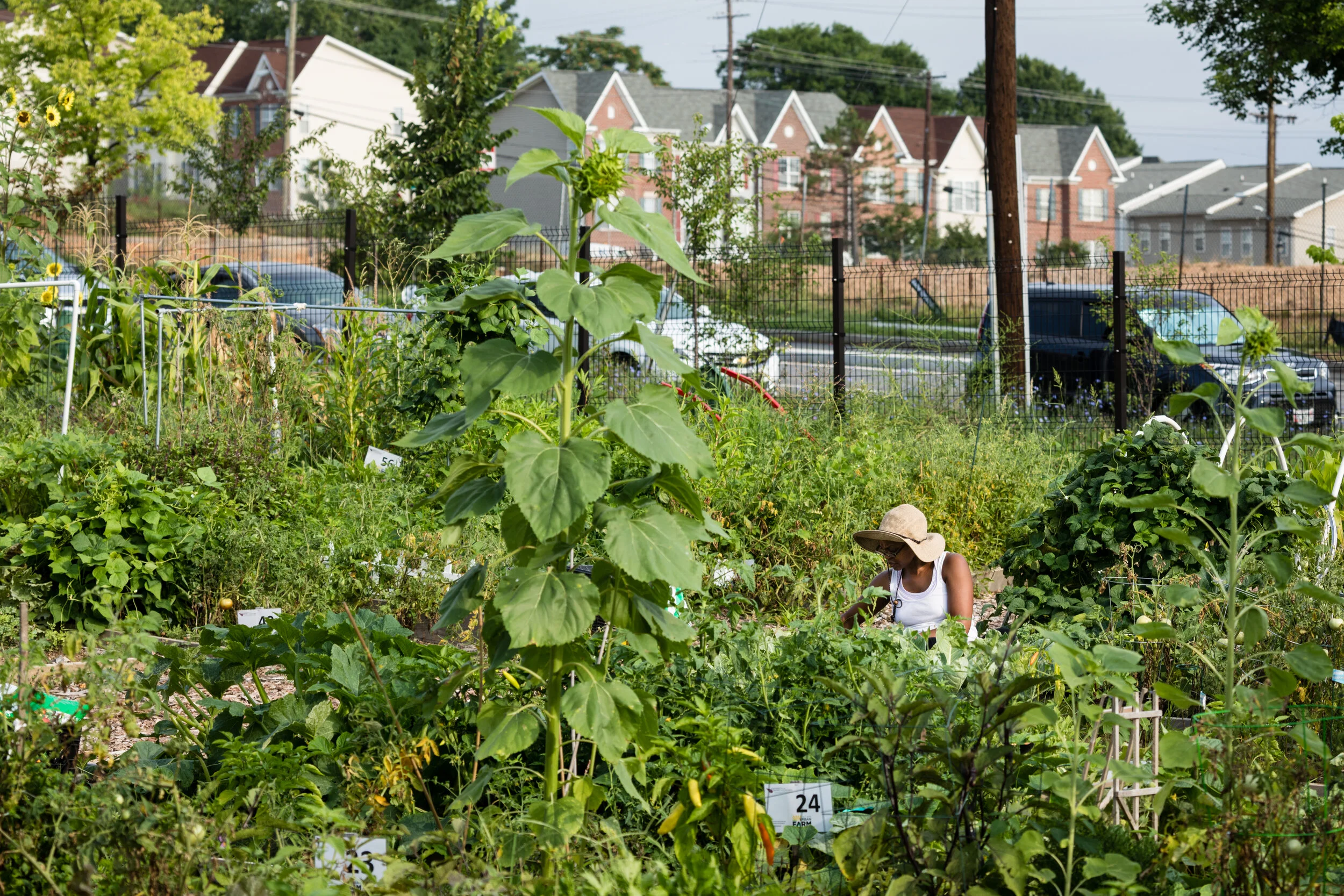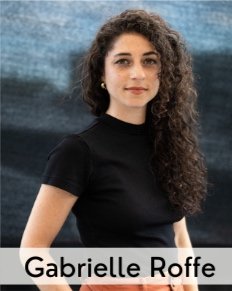Diversity, Equity, and Inclusion in Chesapeake Bay Stewardship Work: A Conversation with Gabrielle Roffe and Briana Yancy
/On July 28th, HerChesapeake hosted a conversation with Gabrielle Roffe and Briana Yancy about the role of diversity, equity, and inclusion in Chesapeake Bay restoration and stewardship. Gabrielle Roffe is the Manager of Equity and Community Engagement at Chesapeake Conservancy, where she works in partnership with the National Park Service to promote inclusive stewardship in the Chesapeake Bay watershed. Briana Yancy is the EPA Chesapeake Bay Program’s Diversity Workgroup Coordinator, where she works to lead collaborative efforts focused on diversity, equity, inclusion and justice to advance watershed restoration goals. Gaby and Briana opened up about their career paths, discussed some of the successes and challenges they’ve faced, and shared their thoughts on the future of this type of work and what they believe are the most important factors in ensuring success.
We are grateful to Gaby and Briana for sharing their stories, and for this space that HerChesapeake provided for people to learn from each other and make connections.
(Interview answers were edited for clarity).
Can you share how you ended up in your current job, what you do, and what is the social change you're hoping to create through that work?
Briana: I ended up in my current role because I was the Diversity Workgroup staffer for a year, and when the position of coordinator opened up I applied because I was really interested in continuing to do this work at a greater capacity. I started doing environmental justice and DEIJ work in general in undergrad, when I noticed that in my classes and research I was often the only woman of color and I didn’t understand why. I pursued DEIJ-related positions to better understand the history of this issue.
Gaby: In undergrad I worked for an environmental justice research organization. I was passionate about social and environmental justice and began threading that into the work I did around conservation. At that point in my career I had been very externally focused on working with communities, but was frustrated with the internal restraints there are in doing this work. I shifted to work for the U.S. Fish and Wildlife Service, but left after about six months due to personal issues. I then got a job at Chesapeake Conservancy, where my work focuses both internally on trying to push our organization to embrace the values of equity and inclusion, and promoting justice externally with partners and communities. Social change is at the core of all of my work.
What does your day-to-day life look like on the job? How are you accomplishing these various goals?
Gaby: I wear about 25 different hats, so everyday looks very different. I lead our internal JEDI task force, where we have monthly staff meetings to tackle our strategic plan around diversifying our staff, and I also work with our leadership and our board and our DEIJ sub-committee on moving us forward as an organization. This might be re-writing policies related to hiring, equitable compensation, promotions, and evaluations of staff. I also consult each of our departments and meet with anyone who wants to thread DEIJ into their work. I also lead a team of six bilingual rangers who are doing Spanish interpretation at nine Maryland state parks. I also work with Briana a lot, through different advisory committees related to integrating DEI into different networks, programs, and funding mechanisms. I try to listen to communities, bring communities and under-represented people to the table, and make sure they have a safe space for their voices to be heard and amplify voices whenever possible.
Briana: I second Gaby’s point about the presentations and consultation work of being on advisory committees. I’m in a lot of meetings, where I talk to people about how DEIJ applies to their work and provide advice. My job title is also a Life Scientist, so I don’t just have the diversity coordination role, I also do things for the science council and manage grants. I basically am trying to help people figure out how all these different pieces fit together.
What are some of the unique challenges of doing DEIJ work in the environmental field? What are some of the specific DEIJ needs in the Chesapeake Bay region?
Gaby: The environmental field is unique because it is deeply rooted in racism and white supremacy. Conservation in the U.S. was started for white people, by white people, and the founders of the conservation movement we were taught about in school were actually very racist. I think the very notion of conservation needs to be looked at more deeply, and we need to question who land is being conserved for, and by who it is being conserved. I also think this field is unique because there are a lot of forward-thinking people who do this because they love it. I see a ton of passion and open-mindedness to change in theory, but because our systems are so deeply rooted in white supremacy and racism, it’s not easily practiced.
Briana: For the Chesapeake Bay, I would say that access is a huge issue- access to clean water, green spaces, recreation, a good livelihood, and funding. Most of the organizations that make up the Chesapeake Bay Program manage grant programs, but they are often too intricate and strict, which prevents a lot of people from being able to apply for funding. I think this ties into what Gaby said about how this movement has been getting so big in recent years. We need to be focusing more on the organizations who have been doing environmental justice work for a long time, and focus on how we can make their work bigger, rather than constantly starting something new. We need to transfer power to different types of organizations and let them take the lead.
Can you tell us about a success or proud moment in your career path so far?
Gaby: This year we’ve had some huge wins as an organization and as a community at Chesapeake Conservancy. We helped get the Rappahanock tribe some of their land back at Fones Cliffs, and helped conserve some of their land through the U.S. Fish and Wildlife Service. We also saved Elktonia Beach in partnership with Blacks of the Chesapeake, which was a historically black beach in Annapolis that is going to be turned into a new park. I’m really proud to have been involved with these projects and to work with an organization leading the way. Another success is my interpersonal relationships with my staff - we have amazing retention for the bilingual ranger program and it’s been really impactful for each person involved in this program.
Briana: It can be overwhelming thinking about all the things that are out of your control in this field, but one of the things I do have control over is that I can help people by providing resources, information, and connections. I do this really often and really well, so it’s something that I’m proud of. For example, a few days ago I had a meeting with a rising high school senior, who I was able to connect with my undergraduate scholars program. I've also been setting up professional development opportunities for my interns all summer, and I recently helped someone find speakers for a panel. It means a lot to me when I can help people.
What advice do you have for people who want to create a more diverse/equitable/inclusive/just system of environmental work? What advice do you have for people who identify as a person of color, or part of a minority group, or part of a marginalized or excluded community, who want to do this work?
Gaby: I like to say that inclusivity is not what you do, it’s who you are. It’s how you practice interpersonal relationships, it’s how you interact with and treat your staff, and it’s practicing empathy. I think this is where the real change needs to happen in order to do this work successfully. Being able to retain a diverse workforce makes people feel safe and included, and we need to create a safe space for communities. We also need to create brave spaces for white people to explore this work and face the discomfort that comes with it. My biggest advice is to find and tap into a community, because this work is difficult. Having a community going through similar experiences has been crucial, such as the Young Professionals of Color, and the Environmental Leadership Program. Having a community of people to vent to and feel safe with has been really important.
Briana: Whatever actions you take or changes you make should be made in mind with the goal of benefiting the most marginalized group you are working with. It should have an exponential benefit on that group, but it should still have a positive impact on everyone else. If you’re doing this work correctly then everyone should be lifted up. For people of color, I think it’s important to know what you’re interested in, make sure you set boundaries, advocate for yourself, and don’t let anyone try to put you in a box.



